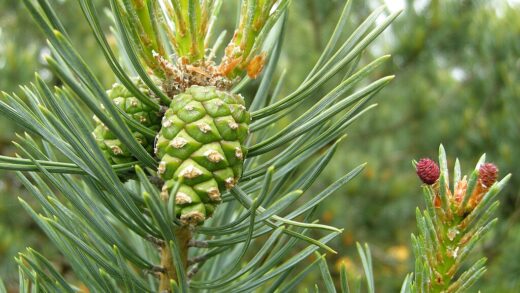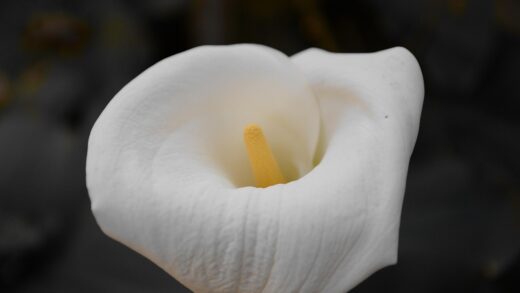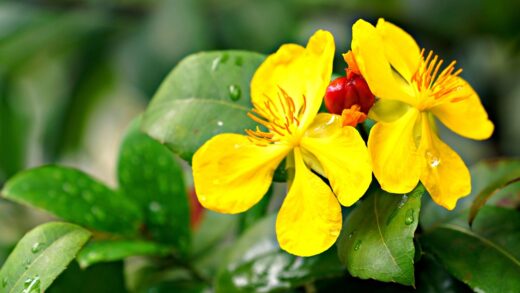The wood anemone, a delicate harbinger of spring, is a cherished perennial that brings a touch of wild elegance to any shaded garden setting. Its charming, star-like white flowers, often tinged with a soft pink or purple on the reverse, dance atop slender stems, creating a magical carpet of blooms in early spring before the deciduous canopy above fully unfurls. Native to the woodlands of Europe, this low-growing plant thrives in conditions that mimic its natural habitat, requiring a thoughtful approach to its care to ensure its longevity and a spectacular seasonal display. Understanding its life cycle, which is intricately linked to the rhythm of its woodland home, is the first step towards successfully cultivating this enchanting species. Proper care involves a delicate balance of providing the right soil composition, adequate moisture, and appreciating its ephemeral nature as it retreats underground for its summer dormancy.
This beautiful plant is not one that demands constant attention, but rather a well-considered initial placement and an understanding of its seasonal needs. Its rhizomatous roots spread slowly, forming attractive clumps over time, a testament to a patient and observant gardener. The key to its heart lies in replicating the dappled sunlight and humus-rich soil of a forest floor. Once established, it becomes a relatively low-maintenance addition to the garden, rewarding the gardener with an increasingly beautiful display year after year. The true art of caring for the wood anemone is to provide it with the environment it craves and then allow it the freedom to perform its springtime spectacle without unnecessary interference.
The foliage of the wood anemone is just as attractive as its flowers, consisting of deeply divided, fern-like leaves that form a lush green groundcover. This foliage plays a crucial role in the plant’s health, absorbing sunlight and creating the energy reserves needed for the following year’s blooms. It is imperative to allow the leaves to die back naturally after the flowering period has concluded, as premature removal can significantly weaken the plant. This period of foliar decline signals the plant’s transition into dormancy, a necessary rest period during the warmer, drier summer months when the overhead canopy is dense and light is scarce on the forest floor.
Caring for the wood anemone is an exercise in appreciating the subtle cycles of nature. It teaches a gardener to look beyond the fleeting beauty of its flowers and understand the importance of the entire life cycle, from the emergence of its first leaves to its quiet retreat beneath the soil. Providing the right conditions is not merely about cultivation; it is about creating a small piece of a woodland ecosystem within the garden, where this delicate perennial can truly feel at home. The reward is a breathtakingly beautiful, yet understated, display that captures the very essence of spring.
Soil and site selection
The foundation of successful wood anemone cultivation lies in the careful selection of a suitable site and the preparation of the soil. These plants are fundamentally woodland dwellers, and their happiness is directly correlated with how closely we can replicate this environment. They prosper in partial to full shade, particularly the kind of dappled light found beneath deciduous trees and shrubs. This location provides them with the early spring sunshine they need to flower and photosynthesize before the leaves of the taller plants emerge and cast a dense shade for the rest of the growing season. An east or north-facing aspect is often ideal, as it protects them from the harsh afternoon sun which can scorch their delicate foliage.
More articles on this topic
The soil itself must be rich in organic matter, mirroring the humus-laden floor of a mature woodland. A soil that is consistently moist but well-draining is paramount to prevent the rhizomes from rotting, which is a common issue in heavy, waterlogged clays. Before planting, it is highly beneficial to amend the native soil generously with well-rotted leaf mould, compost, or other forms of organic matter. This not only improves the soil structure and drainage but also provides a slow-release source of essential nutrients that the plants will utilize throughout their active growing period. The ideal soil pH is slightly acidic to neutral, which is typical of most woodland environments.
When choosing a location, consider the plant’s growth habit. Wood anemones are slow spreaders, gradually forming a carpet-like colony over several years. Planting them in an area where they will not be disturbed and have room to naturalize is crucial for their long-term success. They are excellent companions for other early-spring ephemerals like hostas, ferns, and trilliums, which will begin to fill the space as the anemones enter their summer dormancy. This companion planting strategy creates a dynamic and continuously evolving garden scene that offers visual interest throughout the seasons.
Finally, it is important to remember that these plants are intolerant of disturbance once established. The delicate, brittle rhizomes are easily damaged by digging or hoeing, so choose a permanent home for them from the outset. Avoid planting them in high-traffic areas or in beds that are frequently cultivated. A quiet, undisturbed corner of a shade garden, under the protective canopy of larger woody plants, is where the wood anemone will truly thrive and reward you with its ethereal beauty each spring.
Watering and moisture requirements
Maintaining the correct moisture level is a critical aspect of wood anemone care, directly influencing the health and vigor of the plant. Throughout their active growth period in the spring, from the emergence of foliage to the fading of the flowers, they require a consistently moist soil environment. This mimics the damp conditions of a woodland floor in spring, which is fed by melting snow and regular rainfall. It is essential that the soil never be allowed to dry out completely during this crucial phase, as this can lead to stress, premature wilting of the foliage, and a reduction in the plant’s ability to store energy for the following year.
More articles on this topic
The frequency of watering will depend on your local climate, rainfall, and soil type. In regions with reliable spring rains, supplemental watering may only be necessary during unexpectedly dry spells. However, in drier climates or in gardens with very sandy, free-draining soil, regular monitoring and watering will be required. A good practice is to check the soil moisture with your finger; if the top inch feels dry, it is time to provide a deep and thorough soaking. Watering deeply encourages the roots to grow further into the soil, making the plant more resilient to short periods of drought.
As the season progresses into late spring and early summer, the wood anemone’s water needs change significantly. After the foliage begins to yellow and die back, the plant is entering its natural dormancy period. During this time, its water requirements decrease dramatically. In fact, excessively wet conditions during the summer can be detrimental, as the dormant rhizomes are susceptible to rot in waterlogged soil. In most garden settings that replicate a woodland floor, natural rainfall will be sufficient during the summer months, and supplemental irrigation should be ceased.
It is a common mistake for gardeners to continue watering shade gardens with the same frequency throughout the summer, which can inadvertently harm dormant woodland ephemerals like the wood anemone. The key is to be observant and adapt your watering practices to the plant’s life cycle. Provide ample moisture when the plant is actively growing and photosynthesizing in the spring, and then allow the soil to become somewhat drier during its summer slumber. This careful management of moisture is one of the most important factors in ensuring the long-term health and perennial return of these charming woodland flowers.
Mulching and feeding
Providing the right nutritional support and ground cover is essential for the long-term health of wood anemones, and mulching is the most effective way to achieve this. Applying a layer of organic mulch in the autumn is highly beneficial for several reasons. A good mulch, such as shredded leaves, well-rotted leaf mould, or fine bark chippings, helps to insulate the soil and protect the shallow rhizomes from the freeze-thaw cycles of winter. This protective blanket ensures the plants remain safe and dormant until the warmth of spring signals them to begin their growth.
Beyond protection, an organic mulch provides a slow and steady supply of nutrients as it breaks down over time. This process beautifully replicates the natural nutrient cycling found on a forest floor, where fallen leaves and other organic debris decompose to enrich the soil. This gentle, continuous feeding is exactly what wood anemones are adapted to and is far superior to the application of synthetic chemical fertilizers, which can be too harsh for these delicate plants. The mulch also helps to conserve soil moisture, reducing the need for supplemental watering, and suppresses weed growth that could otherwise compete with the anemones for resources.
When it comes to direct feeding, wood anemones are not heavy feeders and generally do not require regular applications of fertilizer if they are planted in organically rich soil and mulched annually. If your soil is particularly poor or sandy, a light top-dressing with a balanced, slow-release organic fertilizer in early spring, just as new growth emerges, can be beneficial. However, it is crucial to avoid high-nitrogen fertilizers, as these can promote lush, weak foliage at the expense of flowers and can make the plant more susceptible to disease. The goal is to support healthy, balanced growth, not to force rapid, unnatural development.
The best approach is always to focus on improving the soil’s structure and fertility with organic matter. Incorporating compost or leaf mould at the time of planting and topping up the mulch layer each autumn will create a self-sustaining system that provides all the nutrients the wood anemones need to thrive. This sustainable approach not only benefits the plants but also contributes to a healthier overall garden ecosystem, fostering the soil life that is so vital for the well-being of all your plants. This mimics their natural environment as closely as possible, which is the ultimate goal in their cultivation.
Pest and disease management
Fortunately, the wood anemone is a relatively robust plant that is not troubled by a large number of pests or diseases, especially when grown in its preferred conditions. A healthy, well-sited plant is its own best defense. The most common issues that may arise are typically related to fungal problems, which are often a result of poor air circulation or overly wet conditions. Powdery mildew can sometimes appear on the leaves as a white, dusty coating, particularly in humid weather. While it is usually not fatal, it can weaken the plant by inhibiting photosynthesis. Improving air movement by selectively pruning nearby plants can help prevent this issue.
Slugs and snails can also be a nuisance, particularly in the early spring when the tender new foliage is emerging. These mollusks are drawn to the moist, shaded environments where wood anemones thrive, and they can cause significant damage to the leaves and flowers overnight. There are several methods for controlling them, ranging from physical barriers like crushed eggshells or copper tape to biological controls such as encouraging natural predators like birds and frogs. Hand-picking them during damp evenings is also an effective, albeit time-consuming, method. Using organic slug pellets based on ferric phosphate is a safer alternative to traditional metaldehyde-based products.
A more serious, though less common, problem is anemone smut, a fungal disease that specifically affects anemone species. This disease manifests as thickened, distorted leaves with dark, lead-coloured streaks that eventually rupture to release black, sooty spores. There is no chemical cure for anemone smut, so the only effective course of action is to carefully dig up and destroy the infected plants to prevent the spores from spreading to healthy specimens. It is crucial to remove the entire plant, including the rhizome and surrounding soil, and not to add it to your compost heap.
Ultimately, the best strategy for pest and disease management is prevention. By providing the wood anemone with its ideal growing conditions – well-draining, humus-rich soil, dappled shade, and adequate moisture during its growth phase – you will be cultivating a strong and resilient plant. Avoid overcrowding to ensure good air circulation, and be vigilant in monitoring for any signs of trouble. A proactive and observant approach will ensure that any potential issues are addressed quickly, allowing your colony of wood anemones to remain healthy and beautiful for years to come.
Post-flowering care and dormancy
The period after the wood anemone has finished flowering is a critically important phase in its annual life cycle, and the care provided during this time directly impacts the plant’s performance in the following year. As the charming white blossoms fade in late spring, the plant’s energy is redirected towards its foliage. The leaves continue to photosynthesize, converting sunlight into energy which is then stored in the underground rhizomes. This stored energy is the fuel for next year’s growth and flowering, so it is absolutely essential to allow the foliage to remain in place until it has completely yellowed and withered on its own.
Many gardeners feel the urge to tidy up the garden by cutting back the fading foliage, but for wood anemones, this is a detrimental practice. Prematurely removing the leaves effectively starves the plant, significantly weakening the rhizome and leading to diminished flowering or even the plant’s demise in subsequent seasons. Patience is key; one must resist the temptation to cut back the leaves, even as they may start to look a bit untidy. They are performing a vital function, and their natural decline is a signal that the energy transfer process is complete.
Once the foliage has died back completely, usually by mid-summer, the wood anemone enters a state of dormancy. During this period, the plant is resting underground, invisible to the gardener. At this stage, it requires very little attention. The primary concern during dormancy is to avoid disturbing the rhizomes. As they are shallow-rooted, any digging or cultivation in the area can easily damage them. It is helpful to use plant markers to remember their location so that you do not inadvertently dig them up when planting summer or autumn-flowering species.
This dormant period coincides with the time when the deciduous canopy overhead is at its densest, and the woodland floor is at its darkest and often driest. The plant is perfectly adapted to these conditions, and you should allow the area to become somewhat drier than it was in the spring. There is no need for supplemental watering during this time unless you are experiencing a very prolonged and severe drought. By understanding and respecting the wood anemone’s natural cycle of growth and rest, you provide it with the care it needs to perennialize successfully and grace your garden with its ethereal beauty each and every spring.


















